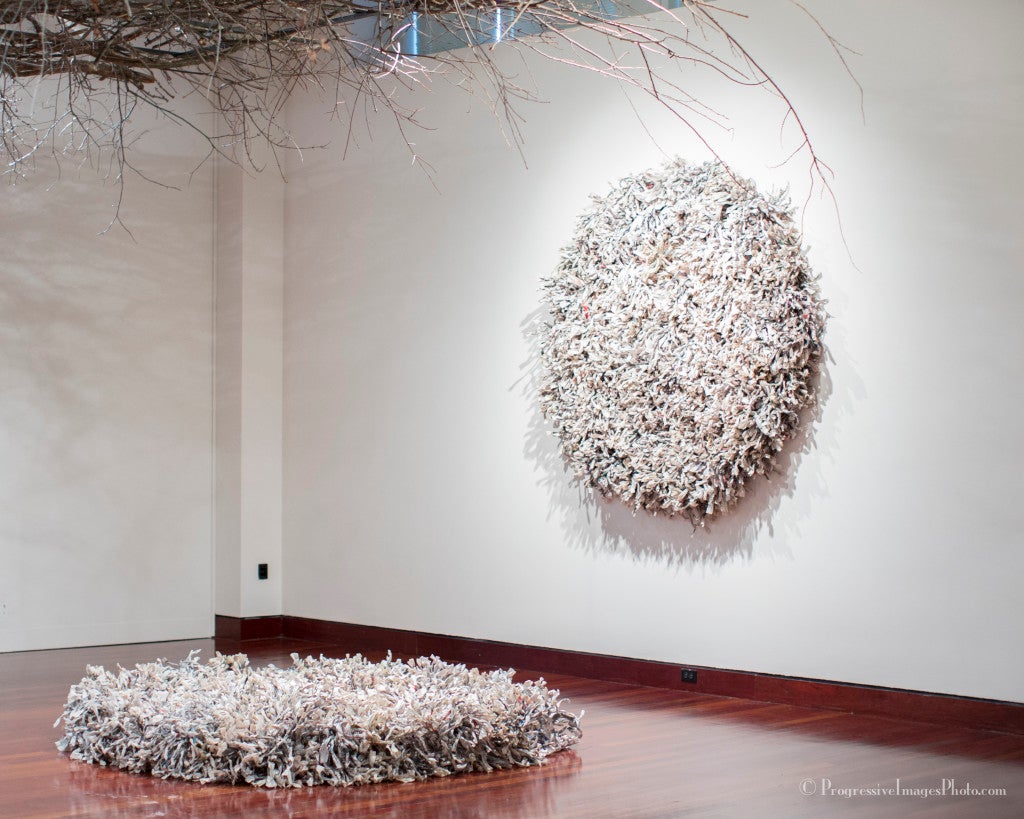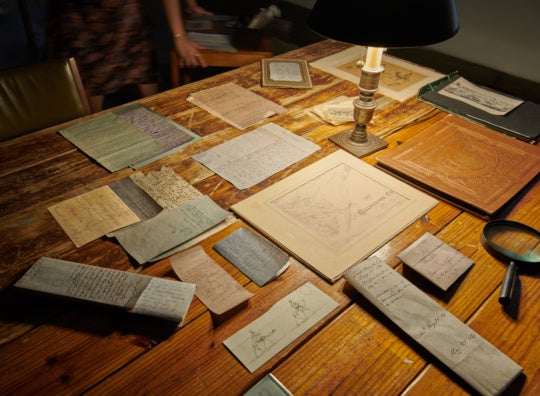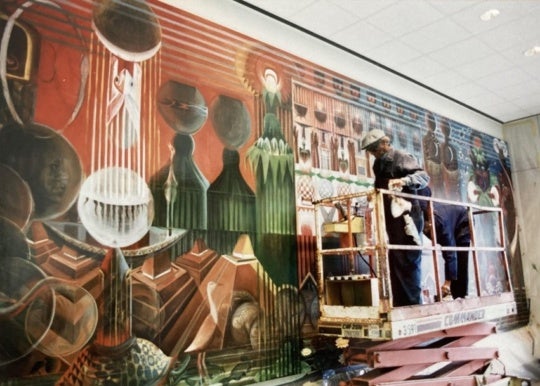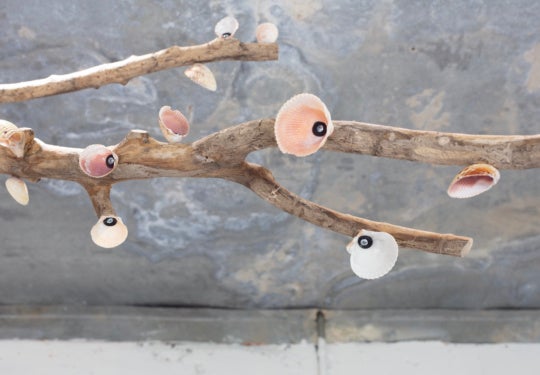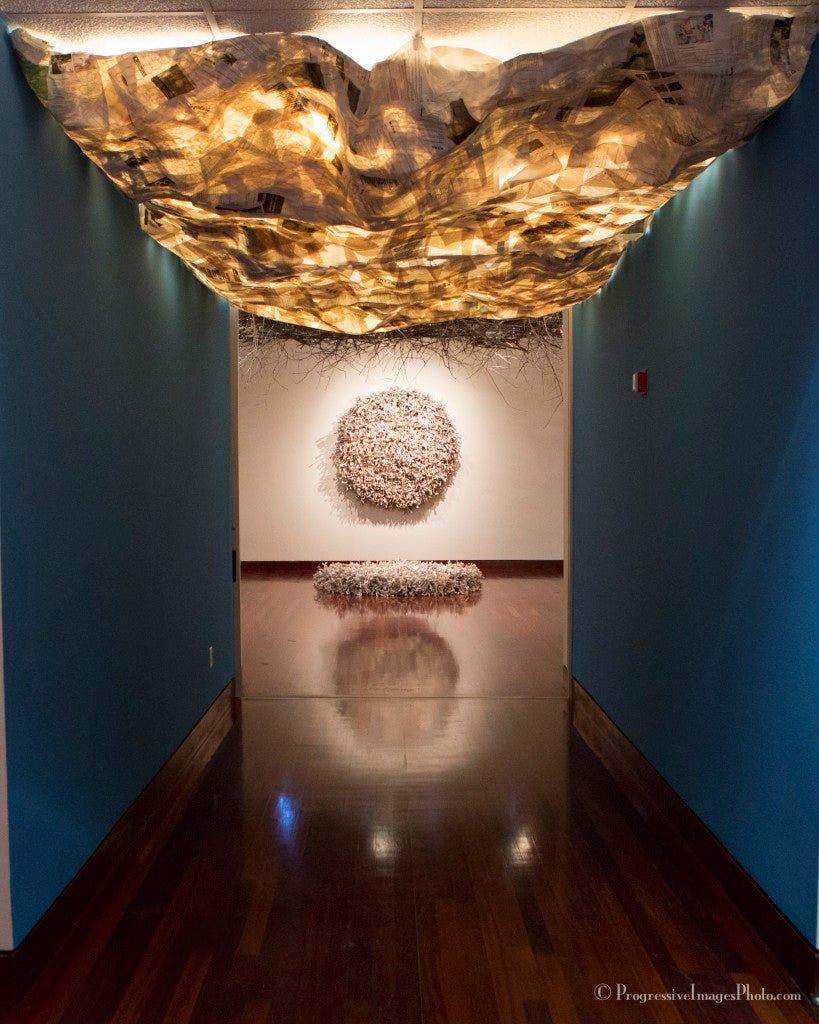
Organized by the Spelman College Museum of Fine Art, “Maren Hassinger … Dreaming” distills a productive 40-year career to fewer than 15 carefully chosen works, on view through May 16. Hassinger, a Los Angeles native who is currently director of the Rinehart School of Sculpture at the Maryland Institute College of Art in Baltimore, is a sculptor, performer, and video artist. Unifying her practice is an abiding interest in the human body, in its physical capabilities as well as its relation to the environment.
Hassinger is wide-ranging in her material choices. She is drawn to both the natural and the manmade, frequently using one to invoke the other. For instance, On Dangerous Ground (1981), one of the earliest works included in the show, is a grouping of twisted and frayed wire rope sculptures reminiscent of bundled branches, each spiky form carefully spotlighted to create dramatic shadows. Nearby, a second wire rope sculpture, titled Hedge (1982), forms a dense, bramblelike barrier. If the somewhat menacing quality of these two works keeps the viewer at a slight remove, Hassinger’s series of woven newspaper stools, the Sit Upons (2010/2015), invites actual interaction. Inspired by the artist’s experience of making paper seats as a Camp Fire Girl, the series typifies her interest in phenomenological concerns as well as her exploration of undervalued craft techniques, such as paper weaving.
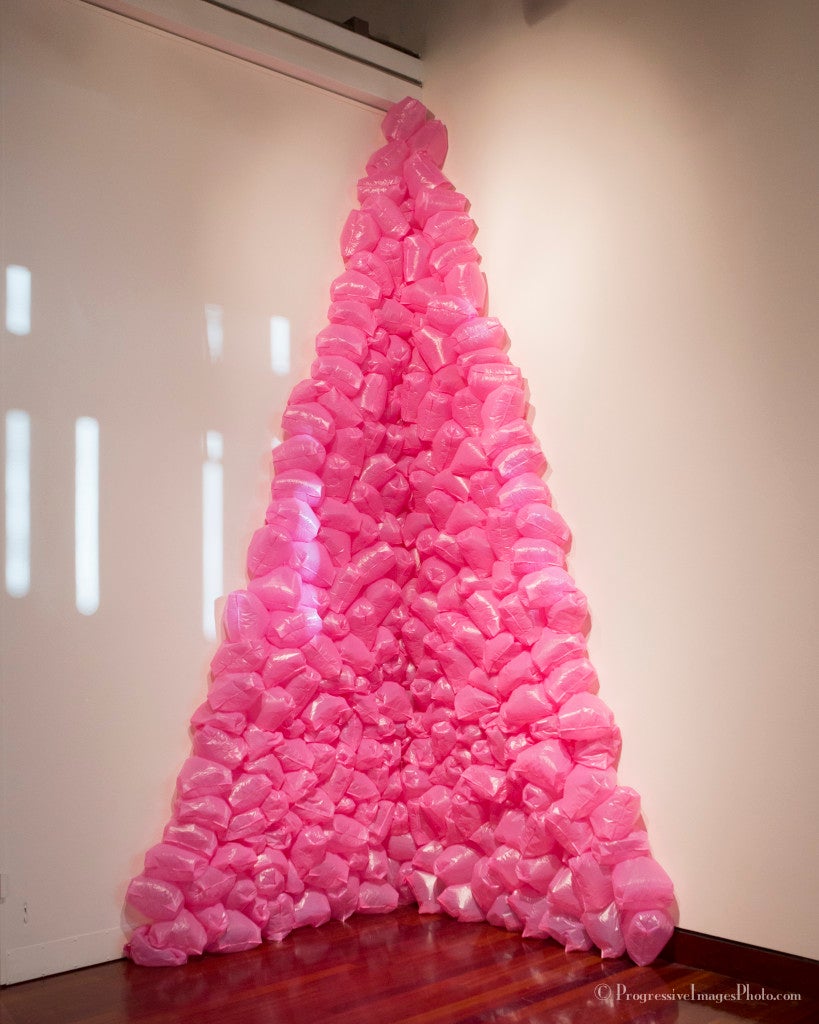
love notes, 32 feet high.
The placement and materiality of Hasssinger’s sculptures inspire strong visceral responses. The Weight of Dreams (1995/2015) beckons to viewers from the hallway ceiling. Fashioned out of onion paper and chicken wire and lit from above, its glowing patchwork surface and cocoonlike form softens the architectural space. The Weight of Dreams does not, despite its title, seem burdened by pragmatic concerns; the illegibility of the emails printed on the onion paper—documents from Hassinger’s directorship at MICA—prevents viewers from parsing the artist’s claim that the installation represents the weight of her own professional ambitions.
In other works, Hassinger’s optimism shines through even more insistently: Consolation (1996) consists of delicate palmetto-shaped wire sculptures arranged in a grid across one large wall; Love (2008) is a tall pyramid of pink plastic bags, each inflated by human breath and filled with a love note; The Dream (2001/2015) forms a canopy of preserved redbud leaves; Wind (2014), a video installation made in collaboration with her daughter, Ava, depicts the two women, dressed from head to toe in billowy white clothes, performing an improvisational duet along the windblown shoreline of East Hampton, New York. Elsewhere, Hassinger has invoked the biblical characterization of wind as “the breath of life,” a sentiment that her video installation poetically visualizes. Also striking a positive chord is Wrenching News (2010/2015), comprising two large mandalas—one on the floor, the other on the wall—shaped out of twisted and knotted strips of newspaper, the printed matter transformed into spiritual symbols of unification and harmony.
Over the years, Hassinger has collaborated on a number of projects with artist Senga Nengudi, whom she first met in Los Angeles around 1977, and with whom she shares a background in sculpture and dance. The Spelman exhibition includes a number of their collaborations. Most notable is a 2014 video documenting Hassinger’s performance with Nengudi’s sculptural installation, R.S.V.P. X (1977/2014), which consists of dark-toned, sand-filled pantyhose that have been twisted together and stretched from the wall to the floor. Though originally inspired by Nengudi’s physical experience with pregnancy and childbirth, the work takes on additional associations when considering Hassinger’s aging yet still flexible physique. As the artist moves through a series of carefully choreographed poses, her body mirrors the work’s combination of taut and pendulous nylon forms. While the movement of actual and metaphorical bodies here is gendered, at the same time, the pairing seems to evade definitive labeling by suggesting a more fluid conception of the human form.
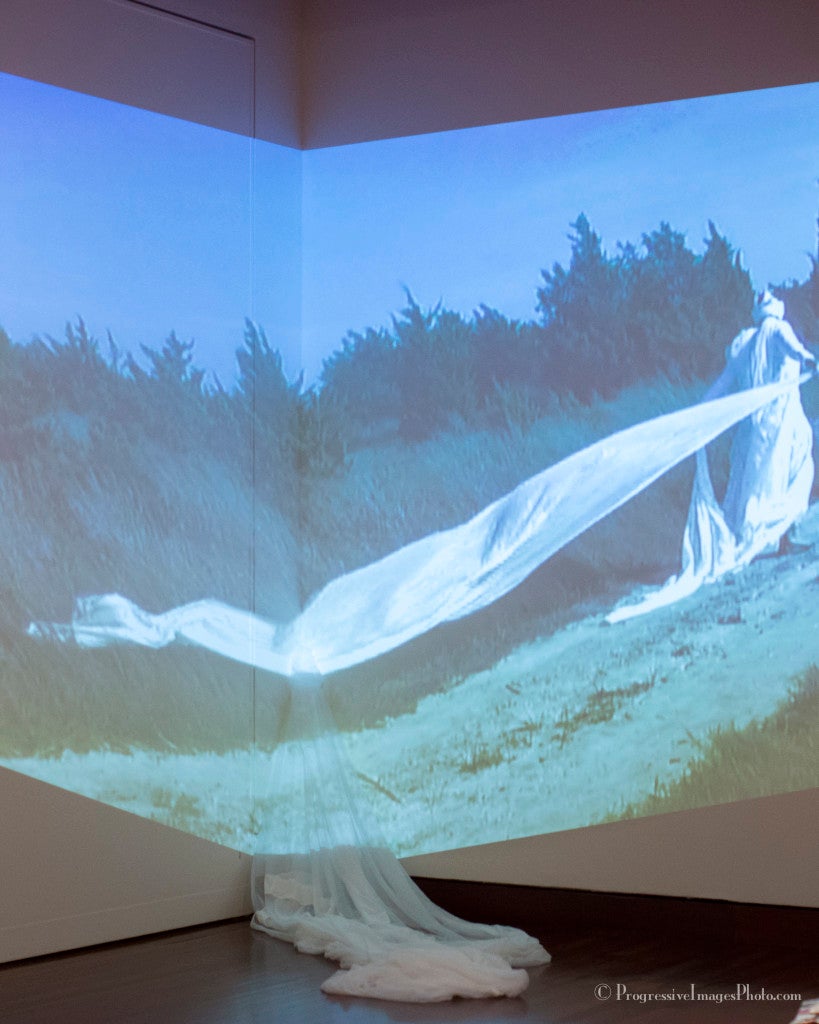
In some of her video and film work, Hassinger directly tackles gender and racial topics. In Daily Mask (2004), viewers see the artist ritualistically apply black greasepaint to her face in a parody of both the history of minstrelsy, and its performance of racial otherness, and the modern artistic appropriation of African arts. Striking even closer to home is Hassinger’s short video, Birthright, a compilation of intimate conversations inspired by the artist’s quest to uncover information about her estranged father and his treatment of the women in the family.
Though not included in the Spelman retrospective, River (1972) is also a noteworthy early example of Hassinger’s sculptural engagement with her African-American identity. Composed of galvanized chain and rope, its long serpentine form evokes the history of American slavery as well as the waterways that facilitated the slave trade. River likewise attests to a vital period in the 1970s in Los Angeles that saw artists such as Mel Edwards, John T. Riddle Jr., and Betye Saar using found materials to address black experiences. Examples of work from this period of Hassinger’s career would have been a welcome inclusion in the Spelman retrospective.
Hassinger is at her best when her material processes and sculptural transformations result in abstract yet highly evocative forms. Her treatment of unorthodox materials teases out subtle meaning for each viewer. Above all, Hassinger consistently situates the human body at the dynamic intersection of the organic and the industrial, the natural and the cultural. Encouraging movement and, at times, direct participation, she uses her art to forge a sense of connectedness among seemingly disparate things. Though the artist does not avoid subtle cultural examinations, her larger intentions are shaped by a desire—a dream—to inspire compassion and togetherness.
As part of the retrospective, Hassinger will return to the Spelman Museum on March 20 to present Women’s Work (2006), a collaborative performance in which she and participants will manipulate sheets of newspaper in actions reminiscent of weaving and other craft-based activities stereotyped as “women’s work.”
Susan Richmond is an associate professor of art history in the Welch School of Art & Design at Georgia State University.